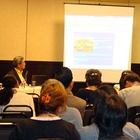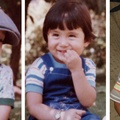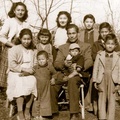>> Part 1
The Unique Japanese Community in Chile
The descriptor, “Japanese community in Chile,” does not appear to be an aphorism that does not correspond with Chilean reality. In Chile there never was, nor has been a “Japanese community” like that found in Peru, Brazil, Mexico, or in other countries where there was official emigration. The opportunities that these Japanese emigrants found in Chile did not allow for the formation of a Japanese “conglomerate” that could achieve cohesion and permanence. The closest they ever came to such a concept was achieved by small groups of two or three families that revolved around an “eldest brother,” and there also was the reliance on a few long-distance relations. Most were constituted in units that were forced to develop their own way of life, mingling with the local population that was fortunately nearby. Over time, these emigrants overcame their fears and wants, leaving them without ancestral collectivism as they carved their own personal spaces where they responded to the ordering, duties, and decisions that once again fell upon them.
Under these conditions the “Japanese Chilean” was born, who put to one side part of what he brought with him from Japan while assimilating part of a new culture.
As such we cannot assign to these Japanese Chileans a precise place or date of arrival with regards to the “Japanese community” because only “Japanese settlers” arrived on distinct dates, in distinct places, and with distinct motivations. Statistically speaking, however, with artificially rendered figures, we speak of a community that does not have any real validity. Even there, too, it would have been so difficult to organize and maintain Japanese associations in the major cities because each one would have had to focus on its own needs, without being able to spend time on collectivist activities that already had lost their initial urgency anyway.
Marriage and Family
The first Japanese emigrants living in Chile were men who came alone. Over 50% of these emigrants were younger than twenty-three years. They had to spend more than ten years alone in Chile before the first five Japanese women would arrive. By 1940 the numerical difference between the number of men and women was not so pronounced, but equally, for each woman there were three men. This was the first limiting factor in being able to make a home with a Japanese husband and wife. The second was the miserable conditions that they faced, even as the majority fought courageously to change their lives. In fact, the average waiting time for a Japanese woman to arrive in Chile was ten years (between the time of her departure from Japan to the moment in which she and her husband decided to form a family overseas). Often Japanese men were unable to gather the necessary resources to go to Japan and choose a spouse, nor were they able to make such arrangements from Chile (This explains why Japanese widows were so accepted).
The staying power of the so-called ‘ancestral’ to preserve the family (surname) produced mixed marriages (with Chilean women) over the long-term despite a) the profound language barrier, b) the enormous differences in traditions and customs, c) the weakness of a nearby, Japanese supportive environment, d) the difficulty of geographical and human isolation that placed undue pressure on the marriage, and e) the idiosyncrasies of Chilean women that defended their ‘patria chica’ and local customs and traditions.
These mixed marriages produced most of the ‘Nikkei ,’ or descendents of Japanese emigrants, who saw themselves strongly influenced by the local environment in which they lived. The enormous weight of local culture diluted effectively the Japanese cultural legacy that had been left in the hands of a father who a) respected the decisions made by the wife within the home, and b) was frequently absent from home because of work. A small survey conducted in 1998 suggested the following: if the father brought a strong Japanese cultural affiliation equal to 100%, the ‘Nisei ,’ or his children, lost more than 50%, and that the ‘sansei’ generation (grandchildren) increased this loss by more than 75%. (In fact, not a single child from a mixed marriage learned the Japanese language inside the home.) In turn, the immigrants who married Japanese women created internal, environmental conditions that privileged Japanese culture. However, the new landscape also weakened this internal success at maintaining Japanese culture, particularly as the children enlarged their circle of contacts with Chilean society outside the home.
Within these Nikkei families formed in Chile two aspects stand out. First, with an economic situation that was delivering only limited products, parents focused on their children’s education as the primary vehicle to bequeath a legacy to them. Secondly, the father’s resignation that he was unable to pass on his culture to his children and also return to Japan with his family (If they are going to live in Chile, then they should be Chileans!)
The 1940s and World War II
Until 1941 the Second World War was only a conflict fought in Europe, and as such, was far removed from Chilean reality. This changed abruptly after the attack on Pearl Harbor (December 7, 1941) and the U.S. declaration of war (December 8, 1941). The black lists and punitive measures that had been taken in secret before these events were now activated against person and property. The most affected were the German and Japanese settlers who began to suffer harassment and biased media campaigns. Despite these efforts, the bulk of the Chilean population continued to coexist with these so-called “enemies.”
Due to the war effort, the Japanese became victims of a) the expulsion of families living in the mining centers controlled by North American and British interests; these Japanese were only permitted to bring a suitcase containing personal items (beginning December 9, 1941), b) the relegation, or banishment, of seventy-four Japanese beginning in January 1943, after a much pressured Chile severed relations with the Axis Powers (These relegations had a duration of six months to two and a half years), and c) the mixture of forced and voluntary deportations of seventy-eight Japanese back to Japan (September 1943). The application of these measures signified that more than 20% of the Japanese population was a direct victim of this belligerent insanity. Chilean authorities also confiscated property, with the most significant being the confiscation and subsequent expropriation (without compensation) of the Andalién de Concepción Fund that would end up in the hands of the University of Concepción.
Most Japanese residents continued living their anonymous lives, confronting the same vicissitudes that any other Chilean citizen had confronted. At the same time, a small group searched for ways to support those who were disgraced because of the war, and they formed what was called the “Caupolicán Hacienda.” The operation of this fund, which, unfortunately, lasted only two and a half years, constituted the only program carried out in Chile with a semblance of Japanese collectivism.
Chilean Nikkei of the Post-War Era
The resumption of diplomatic relations with Japan in 1952 found Japanese residents determined to return to their normal lives. During the 1960s, the Japanese economic takeoff began to be felt in Chile as more and more Japanese capital was invested in the mining, commercial, fishing, banking, and timber industries. The census of 1960 counted around 500 ‘Issei ’ even though not all were permanent residents. In 1992, a special effort was made to record the heritage of the “Chilean Nikkei” scattered throughout the country. With coverage close to 80% 1,614 ‘Nikkei ’ were counted. The total number was estimated over 2000. In 1999, the Japanese embassy in Chile noted that 402 ‘Issei ’ had permanent residence. This figure speaks almost entirely to the recent Japanese arrivals who have replaced the older, pre-war generation that, as silently as it lived, is now gone but has also claimed a special place in the heart of the adoptive land. Again, in 1999, another survey reviewed a sample of sixty ‘Nikkei ’ households in the northern and central regions of Chile, asserting that in least 88% of these marriages, one of the components is net Chilean. The relations that these adults have with other ‘Nikkei ’ only reaches to 30%, while their children (of the ‘Sansei ’ generation) limit them to 13%.
With respect to their social and employment situations, the Chilean ‘Nikkei ’ would empathize whole-heartedly with their own parents’ paramount worry to bequeath education to their children.
These children, the ‘Nisei ’ (born between 1950 and 1970), not only surpassed the national average in terms of enrollment in professional education in Chile, but they also graduated with their degrees. They were able to find work, therefore, in a wide-range of meaningful jobs because of their professional certifications and skills. Within this group, approximately 2% were employed as unskilled laborers. Another minority seemed destined to carry on the paternal legacy.
The grandchildren, or ‘Sansei, ’ (those born between 1970 and 1990) are making new advances in education and social assimilation. (The ‘Nisei ’ of emigrants from the post-war period are included in this group). It is difficult to find a ‘Nikkei ’ with less than twelve-years of regular study. The number of professionals with higher education has increased, and so has the number of those in highly valued jobs (engineers, in particular). Having a professional career is part of every adolescent’s future, and over 75% of youth older than twenty prepares for higher-level careers. Behind the academic degrees emerges a significant minority of successful, independent professionals who are high-level officials in the public, private, and professional sectors, and who have achieved success overseas because of their positive contributions. This generation will witness the disappearance of those first emigrants who came to Chile to work in non-professional, manual labor positions. (This reality justifies, in good part, the scarce coverage that the so-called “dekasegi” received in Chile during the 1980s).
Conclusion
We believe that the history of Japanese settlement in Chile should be similar to other Japanese efforts to settle in Latin America that likewise received no official support. Unfortunately, too many of these histories are neither commonly known nor spread by mass communication. Beautiful odysseys of courage, of nobility, of sacrifice, and of perseverance remain forgotten. Today it seems that these stories appear to be lost in Chile, as they constitute the only visible link in the chain of individual Japanese who crossed the ocean sometime last century to sow seeds in an unknown Latin American country. Fertile seeds. Harvests that today remain in the bosom of their respective societies.
Sources:
Encyclopedia of Japanese Descendants in the Americas . Walnut Creek, California: AltaMita, 2002.
Takeda, Ariel. “Japoneses Chilenos.” In Primer Mitad de Siglo XX. Santiago de Chile, 2006.
The collection "Chile y la inmigración japonesa " in Nikkei Album was developed based on this article.
By Centro de Documentación Virtual Nikkei-Chile.
© 2008 Ariel Takeda







